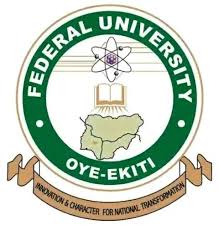Biology Keypoints; Agriculture/ Food Supply/ Population Growth; These Biology keypoints cover topics suitable for students sitting for the following examinations. WAEC, JAMB, NECO, IJMB, GCE, NABTEB
Study other biology key points here
AGRICULTURE
Agriculture is the growing of plants and the rearing of farm animals to provide for our needs, the most important of which is food.
CLASSIFICATION OF PLANTS
- Annual, Biennial and Perennial.
- For agricultural purposes.
- Annuals: they complete their life cycle and die within one growing season which maybe a few months to a year. E.g Rice, maize, wheat, beans, sunflower, etc.
- Biennials: they grow and store food within their first growing season and use it in the second season to produce flowers, seeds, and fruits before they die. E.g Radish, turnip.
- Perennials: they grow from year to year producing flowers, fruits and seeds for many years. E.g Ginger, onion, mango, coconut, rubber etc.
- Agricultural purposes: they include cereals, fruits, vegetables, legumes, beverages and drugs, oils, spices, forage crops, latex, fibres and root crops.
SOIL
- Soil provides anchorage for plants and supplies them with water and mineral salts that are essential for their nutrition.
- Soil is formed by the gradual breaking up of rocks into smaller pieces.
- Soil consists of soil particles, organic matter or humus, water, air, mineral salts and soil organisms.
SOIL FERTILITY: A naturally fertile soil is one that:
- Has the correct proportion of sand and clay particles.
- Has adequate humus and mineral salts.
- Has a good crumb structure.
- Is well drained and aerated.
- Is neutral or slightly alkaline.
EFFECTS OF AGRICULTURAL ACTIVITIES ON ECOSYSTEMS
- Shifting cultivation: this is practised by subsistence farmers. It is not an economic or practical method of farming today due to the overgrowing population.
- Land rotation: it is uneconomical and wasteful as cannot provide for the needs of a rapidly growing population.
- Pastoral farming: it can lead to overgrazing of poor pastures and may lay the land bare and expose it to soil erosion.
- Crop rotation: It allows the continued use of land while maintaining soil fertility and controlling pests and diseases at the same time.
- Monocropping and Monoculture: due to constant cultivation, manure and fertilizers are used to maintain soil fertility, herbicides are used to keep weeds in check, fungicides are used to control fungal diseases and insecticides are sprayed on crops to prevent insect pests from eating or damaging them.
- Mixed farming: farmyard manure is used to enrich the soil while crop byproducts such as cowpea and soybean tops serve as livestock feed.
- Bush burning:
- it destroys a plant community
- Animals that lived on these plants are either killed or driven to surrounding suitable areas.
- The important humus layer of the soil is burned away.
- The cleared land is exposed to the sun and rain.
- Tillage:
- It increases the ability of the soil to absorb water.
- It prepares a seedbed for crops.
- It admits air into the soil.
- It removes weeds.
- An over-tilled soil will become dry and powdery and its topsoil blew away by strong winds leading to land erosion.
- Fertilizers: If only chemical fertilizers are used to improve the soil fertility, the soil will:
- become powdery.
- Lose it’s porosity.
- Become poorly aerated.
- The roots of crop plants cannot absorb mineral salts efficiently.
- Crop yield will be reduced.
- The used chemical fertilizers like nitrates and phosphates are eventually washed into nearby rivers, lakes and streams, thus affecting these ecological systems.
- Pesticides: When crops stay with pesticides some fall on the ground and when these crops get eaten, they cause toxicity and harm to the consumers while those that fall on the ground eventually get to a water body, the organisms in the water body consume them and become harmed too.
PESTS OF CROPS
- Stem borers: bores into the stem of cereal crops like rice, maize etc and eats up plants. E.g Larva of a moth.
- Root feeders burrow into the ground and feed on the plants like yam. E.g Yam beetle.
- Young and Shoot feeders: they pierce and suck juices from young shoots of crop plants like casaava. E.g Aphids, mealy bugs etc.
- Fruit and Seed feeders: feeds on cotton seeds stains the lint and causes them to drop before time. E.g Moths, fruit flies, cotton stainers etc.
PEST CONTROL
- Physical methods.
- Cultural methods.
- Biological methods.
- Chemical methods.
DISEASES OF CROPS
- Fungal diseases: caused by microscopic and parasitic fungi. E.g Smut, Rust, Blight etc.
- Viral diseases: Viruses are parasites. This can include mosaic mottling, lesions, chlorosis, stunting and necrosis. They are spread by insect vectors; e.g mosaic mottling is spread by aphids.
- Bacterial diseases: These include bacterial blight, bacterial wilt, leaf spots, bacterial galls and soft rot.
CONTROL OF THE DISEASES
- Physical methods.
- Cultural methods.
- Chemical methods.
PESTS AND PARASITES OF FARM ANIMALS
- Ticks: They are ectoparasites that live on domestic and farm animals. They suck the blood of their hosts and transmit disease-causing viruses and protozoans.
- Trypanosomes: They are endoparasites. They are transmitted by tse-tse fly to humans and animals, they cause a disease known as trypanosomiasis which causes anaemia, loss of body weight, fever, and eventually death.
- Liver fluke: They are endoparasites. They have a primary host (farm animal) and a secondary host ( water snail). They damage and affect the function of the liver, block bile ducts and affect the digestion of the farm animal.
CONTROL OF PESTS AND PARASITES
- Destroy the breeding places of the pests or vectors.
- Apply appropriate chemicals on the host to prevent infestation and to kill the ectoparasites on it.
- Spray appropriate chemicals on the pest vectors and intermediate hosts to kill them.
- Keep the farm and surrounding clean.
- Treat infected animals with medication immediately.
- Rear animals such as N’dama cattle which has a natural immunity against trypanosomiasis in tse-tse fly areas.
DISEASE OF FARM ANIMALS: the diseases that attack farm animals are caused mainly by viruses, bacteria, protozoa and parasites bigger than protozoa such as flukes, round works, hookworms and tapeworms. Some examples of these diseases are Rinderpest, Bovine dermatophilosis, New castle disease, and Coccidiosis.
FOOD SUPPLY
- Food production needs arable land, i.e land suitable for agriculture, crop and livestock yields, food preservation, storage and wastage.
- Crop yields are increased by maintaining the fertility of the land, controlling crop pests and diseases, using improved crop varieties.
- Livestock productivity is increased by using improved livestock breeds and controlling the pests and diseases that affects them.
PRESERVATION OF FOOD
Food can be preserved by: Drying, Refrigeration, Low-temperature preservation, Freezing, Canning, Pasteurization, Freeze-drying, Fermentation, Chemical Preservation, Irradiation, Salting and Smoking.
POPULATION GROWTH
- The human population is growing at an exponential rate.
- Population growth is affected by both the birth rate and death rate.
CONTROLLING POPULATION GROWTH
Birth control programmes: this can be done by:
- Education.
- The proportion of people living in Urban areas.
- Cultural practices.
Thanks for reading Biology Keypoints; Agriculture/ Food Supply/ Population Growth








